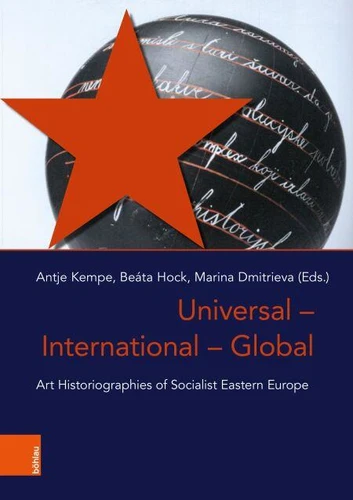Universal – International – Global. Art Historiographies of Socialist Eastern Europe
Par : , , , ,Formats :
Disponible dans votre compte client Decitre ou Furet du Nord dès validation de votre commande. Le format PDF est :
- Compatible avec une lecture sur My Vivlio (smartphone, tablette, ordinateur)
- Compatible avec une lecture sur liseuses Vivlio
- Pour les liseuses autres que Vivlio, vous devez utiliser le logiciel Adobe Digital Edition. Non compatible avec la lecture sur les liseuses Kindle, Remarkable et Sony
 , qui est-ce ?
, qui est-ce ?Notre partenaire de plateforme de lecture numérique où vous retrouverez l'ensemble de vos ebooks gratuitement
Pour en savoir plus sur nos ebooks, consultez notre aide en ligne ici
- Nombre de pages317
- FormatPDF
- ISBN978-3-412-52082-3
- EAN9783412520823
- Date de parution23/01/2023
- Protection num.pas de protection
- Taille12 Mo
- Infos supplémentairespdf
- ÉditeurBöhlau
Résumé
This collection of articles explores a possible alternative beginning of Global Art History and World Art Studies, two methodologies that set a worldwide focus in the study of art around the 2000s. Teaching back to earlier efforts to conceive of the international community in a less Eurocentric way, the volume proposes a tentative link between socialist internationalism as a political and cultural diplomatic principle in the Soviet Block and some new approaches to art and cultural historiography introduced there.
In the "Second World", universal art history or Weltkunstgeschichte were endorsed as frameworks for the teaching and writing of art history. Authors in this book interrogate whether "world art history" as practiced by socialist scholars had aspirations and achievements comparable to today's Global Art History and World Art Studies. Or was this knowledge production in an internationalist paradigm a mere foil for communist rhetoric, behind which severed cultural relations to the Western world could also be recommenced?
In the "Second World", universal art history or Weltkunstgeschichte were endorsed as frameworks for the teaching and writing of art history. Authors in this book interrogate whether "world art history" as practiced by socialist scholars had aspirations and achievements comparable to today's Global Art History and World Art Studies. Or was this knowledge production in an internationalist paradigm a mere foil for communist rhetoric, behind which severed cultural relations to the Western world could also be recommenced?
This collection of articles explores a possible alternative beginning of Global Art History and World Art Studies, two methodologies that set a worldwide focus in the study of art around the 2000s. Teaching back to earlier efforts to conceive of the international community in a less Eurocentric way, the volume proposes a tentative link between socialist internationalism as a political and cultural diplomatic principle in the Soviet Block and some new approaches to art and cultural historiography introduced there.
In the "Second World", universal art history or Weltkunstgeschichte were endorsed as frameworks for the teaching and writing of art history. Authors in this book interrogate whether "world art history" as practiced by socialist scholars had aspirations and achievements comparable to today's Global Art History and World Art Studies. Or was this knowledge production in an internationalist paradigm a mere foil for communist rhetoric, behind which severed cultural relations to the Western world could also be recommenced?
In the "Second World", universal art history or Weltkunstgeschichte were endorsed as frameworks for the teaching and writing of art history. Authors in this book interrogate whether "world art history" as practiced by socialist scholars had aspirations and achievements comparable to today's Global Art History and World Art Studies. Or was this knowledge production in an internationalist paradigm a mere foil for communist rhetoric, behind which severed cultural relations to the Western world could also be recommenced?



